Theres a lot of questions and doubs in the forum about FLAC files and how are they different from mp3, Im gonna try and compile enough information about it in an easy, understandable way.
Differences between Analog Audio and Digital Audio
Analog sounds exist as waveforms. To convert a waveform into digital bits, the sound must be sampled and recorded at certain intervals (or pulses).
Digital Audio has a Sampling Rate or how often a sample is made (kHz) a Bit Depth or how many bits are used to represent each sample (Bits) and a Bitrate or how many Bits are processed in a second (kbps)
Bit Depth: Computer stores information in 1 and 0s. Those binary values are called bits . The higher the number of bits indicates more space for information storage.
Sample Rate: In digital audio recordings, sample rate is analogous to the framerate in video. The more sound data (samples) gathered per period of time, the closer to the original analog sound the captured data becomes.
Bitrate: Bitrate (or bit rate, if you prefer) refers to the number of bits conveyed or processed per second, or minute, or whatever unit of time is used as measurement.
It’s kind of like the sample rate, but instead, what’s measured is the number of bits instead of the number of samples.
In essence, the more bits you can fit into a unit of time, the closer it comes to recreating the original continuously variable sound wave, and thus the more accurate it is as a representation of the song.
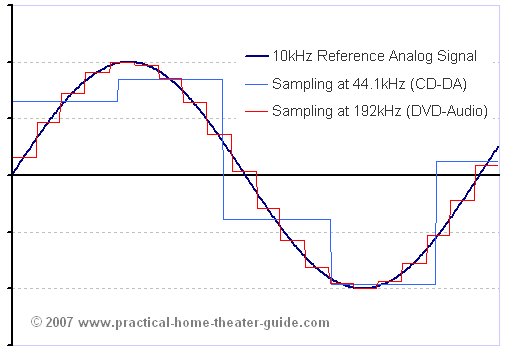
Lets get familiar with the most common Audio Formats:
-
PCM: PCM stands for Pulse-Code Modulation, is a digital representation of raw analog audio signals. There is no compression involved. The digital recording is a close-to-exact representation of analog sound.
PCM is the most common audio format used in CDs (44.1 kHz/16-bit) and DVDs (from 48 kHz/16-bit to 96 kHz/24-bit). -
WAV: WAV stands for Waveform Audio File Format. It’s a standard that was developed by Microsoft and IBM back in 1991. Most WAV files contain uncompressed audio in PCM format.
-
MP3: MP3 stands for MPEG-1 Audio Layer 3 . It was released back in 1993 and exploded in popularity, eventually becoming the most popular audio format in the world for music files.
MP3 is a highly compressed audio file and can only go up to 16 Bits, 320 kbps in quality, which is a huge drop from the full PCM capability.
The main goal of MP3 is three-fold:
- To drop all the sound data that exists beyond the hearing range of normal people.
- To reduce the quality of sounds that aren’t easy to hear.
- To compress all other audio data as efficiently as possible.
-
WMA: WMA stands for Windows Media Audio . It was first released in 1999 and has undergone several evolutions since then, all while keeping the same WMA name and extension. It’s a proprietary format created by Microsoft.
-
AAC: AAC stands for Advanced Audio Coding. It was developed in 1997 as the successor to MP3, and while it did catch on as a popular audio format, it never really overtook MP3 as the most popular.
The compression algorithm used by AAC is much more advanced and technical than MP3, so when you compare the same recording in MP3 and AAC formats at the same bitrates, the AAC one will generally have better sound quality. -
FLAC: FLAC stands for Free Lossless Audio Codec. It has quickly become one of the most popular lossless formats available since its introduction in 2001.
What’s nice is that FLAC can compress an original source file by up to 60 percent without losing a single bit of data. What’s even nicer is that FLAC is an open-source and royalty-free audio file format, so it doesn’t impose any intellectual property constraints. -
ALAC: ALAC stands for Apple Lossless Audio Codec. It was developed and launched in 2004 as a proprietary format but eventually became open-source and royalty-free in 2011. ALAC is sometimes referred to as Apple Lossless.
While ALAC is good, it’s slightly less efficient than FLAC when it comes to compression. However, Apple users don’t really have a choice between the two because iTunes and iOS both provide native support for ALAC and no support at all for FLAC. Unless you use VLC Player.
Now… Why Flac is so convenient?
- FLAC is basically a “ZIP” file for the full WAV file, as you would get from the original recording.
- FLAC is not just restricted to 16-bit/44.1kHz (CD quality), you can get files up to 24-bit/192kHz.
- FLAC Bitrate is variable (Can easily go higher than 4096 kbps) It will go as high as it needs to be in order to keep full sound quality.
- Audio data incurs no loss of information as the integrity of audio data is further insured by storing an MDS signature in the file header.
- FLAC is asymmetric, and it requires integer arithmetic, which is less compute-intensive than most perceptual codecs.
- Dozens of consumer electronic devices are compatible with FLAC, from simple players to stereo equipment.
- FLAC supports tags, tables, cover art, and cue sheets. It allows the implementation of new metadata without breaking older streams.
- FLAC files are suitable for use in editing applications, and it supports fast sample-accurate seeking.
- In the FLAC file, the cue sheet can be exported to burn an exact copy of the original CD.
The easiest way to understand the main difference between an Mp3 and a Flac audio file is with a little analogy.
Lets say you find a picture you like on the internet and download it, its a .jpg (Compressed and Lossy), you wanna use the picture and it looks good in your screen, but when you zoom on it, you discover it pixelates a lot.
You go find another version of the same picture on the internet and you find the same picture, but its a bigger file in .PNG format (Compressed and Lossless). When you download that new photo you notice you can zoom in a lot more and it has a lot more detail and depth.
Image Sample: (Notice how the info is “shaved off” at 20kHz on the Mp3 and not in the Flac.
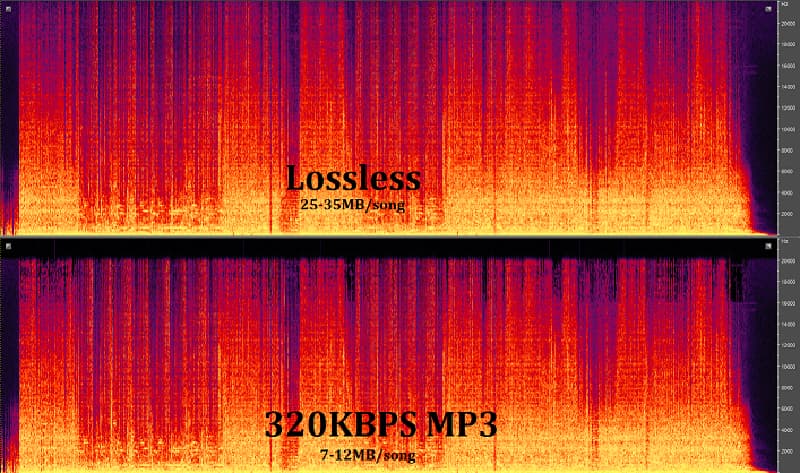
Does this means that listening to subs in .mp3 format is a subpar experience?
Thats a definitive NO! They work perfectly fine in mp3 and we all have had plenty of amazing results with them. They are masterfully crafted and tested.
Why do I want FLAC then?
You get much more sound clarity, better overall quality, specially in all the little details and nuances.
Theres a reason why listening to your favorite music with High End Headphones or Speakers, from a well mastered CD feels so much better than listening from youtube over some low quality headphones/speakers. You enjoy the former so much more, because it engages you on an emotional level, with all the details, the clarity of the instruments, the whole experience is just better. Youtube on the other hand is compressed as hell.

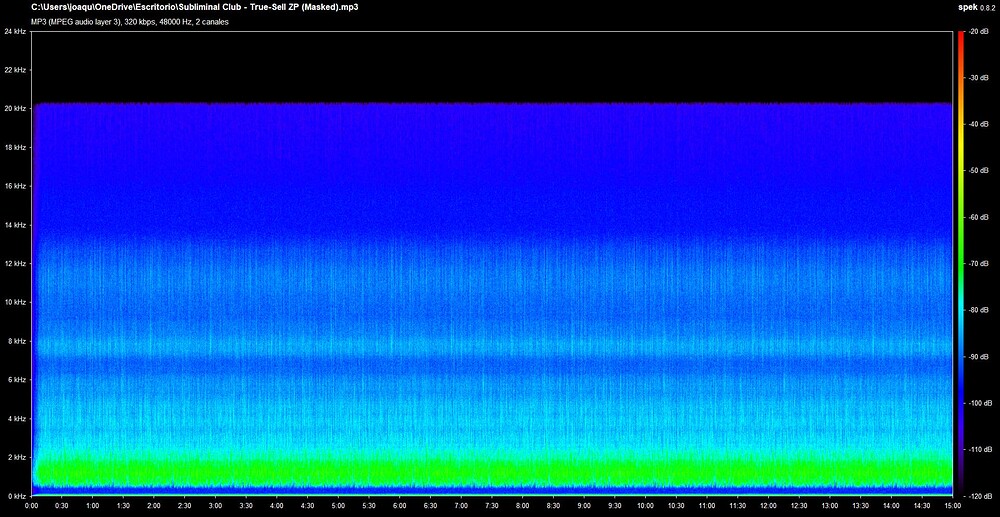
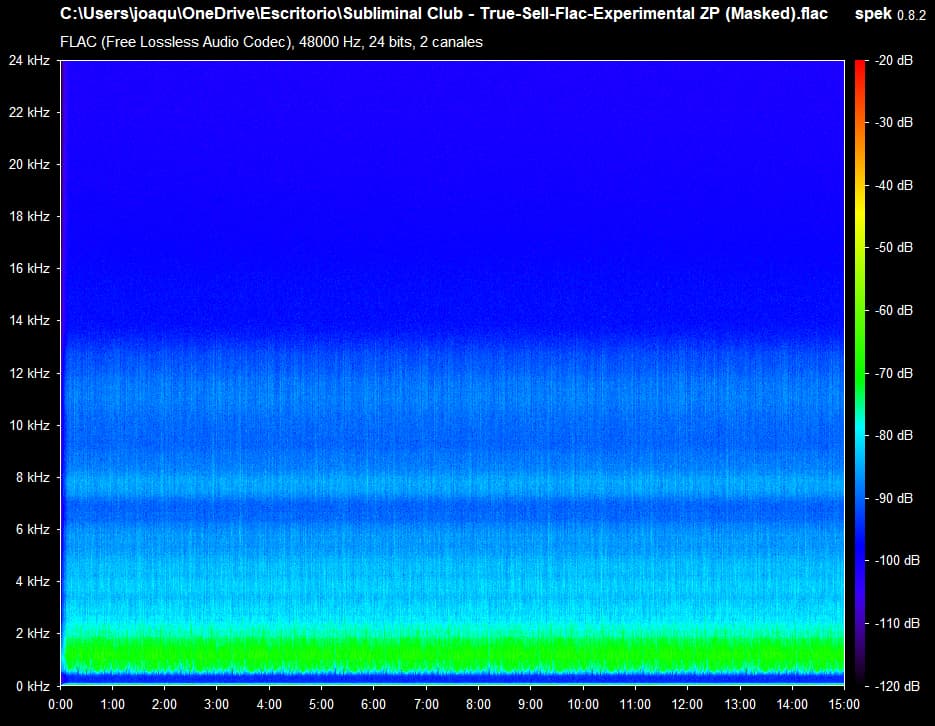
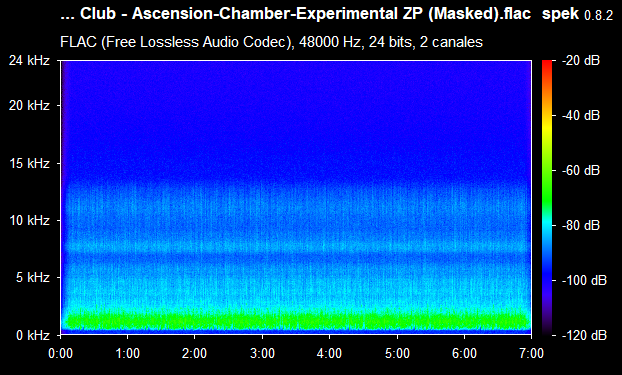
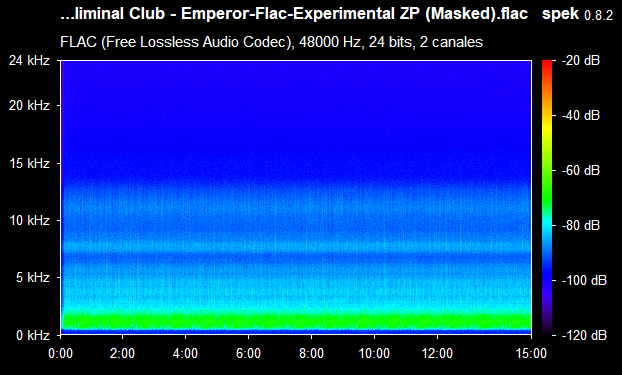
 . Thx for the confirmation
. Thx for the confirmation